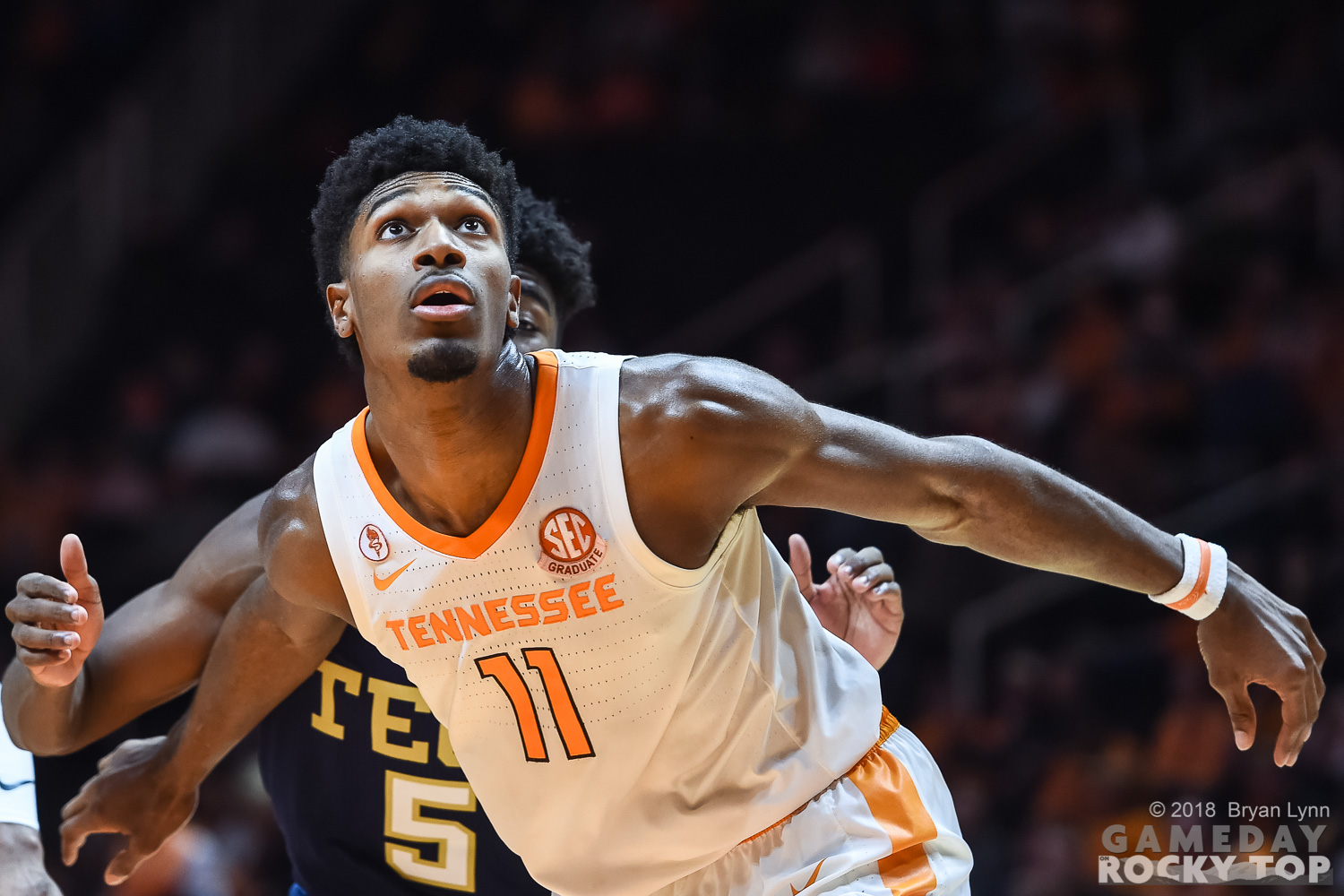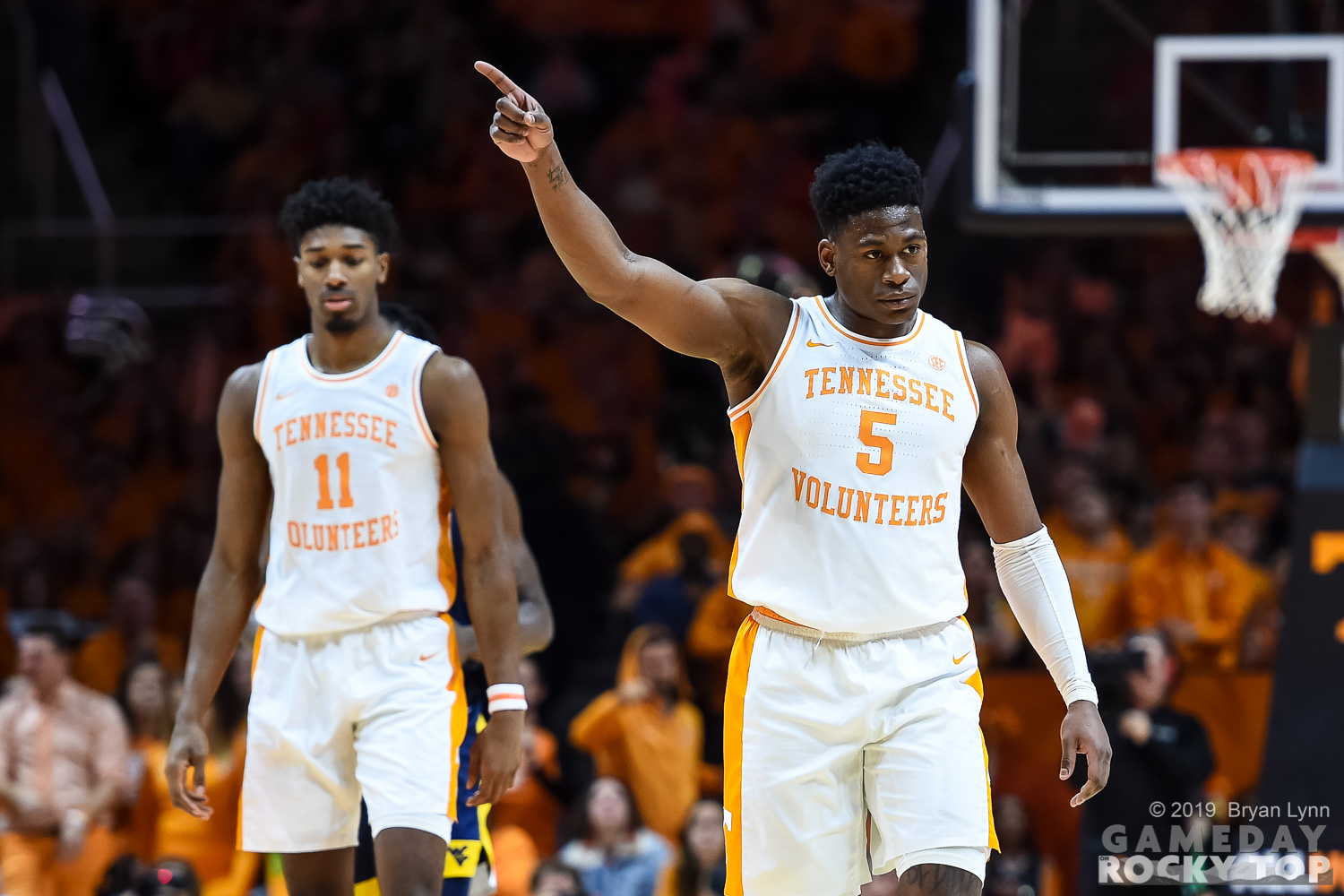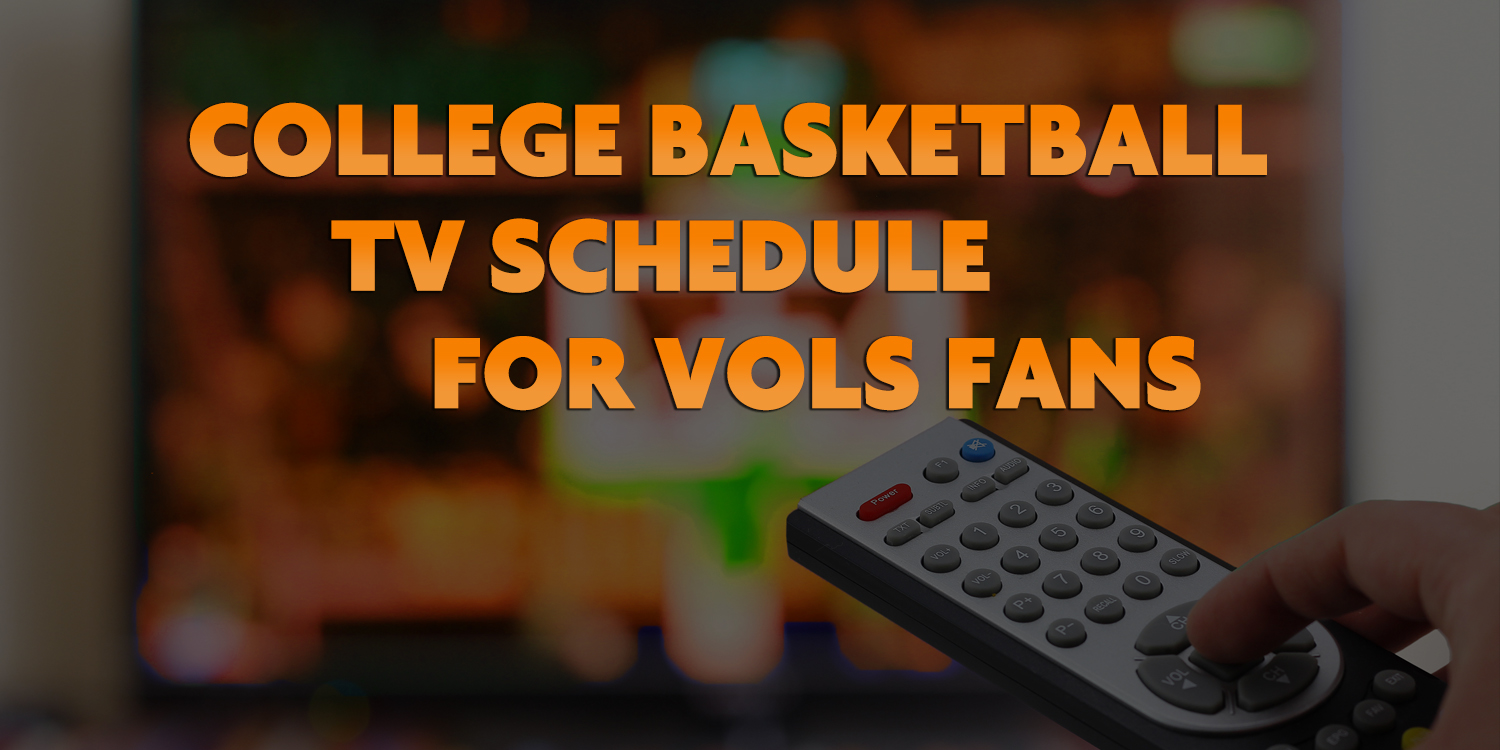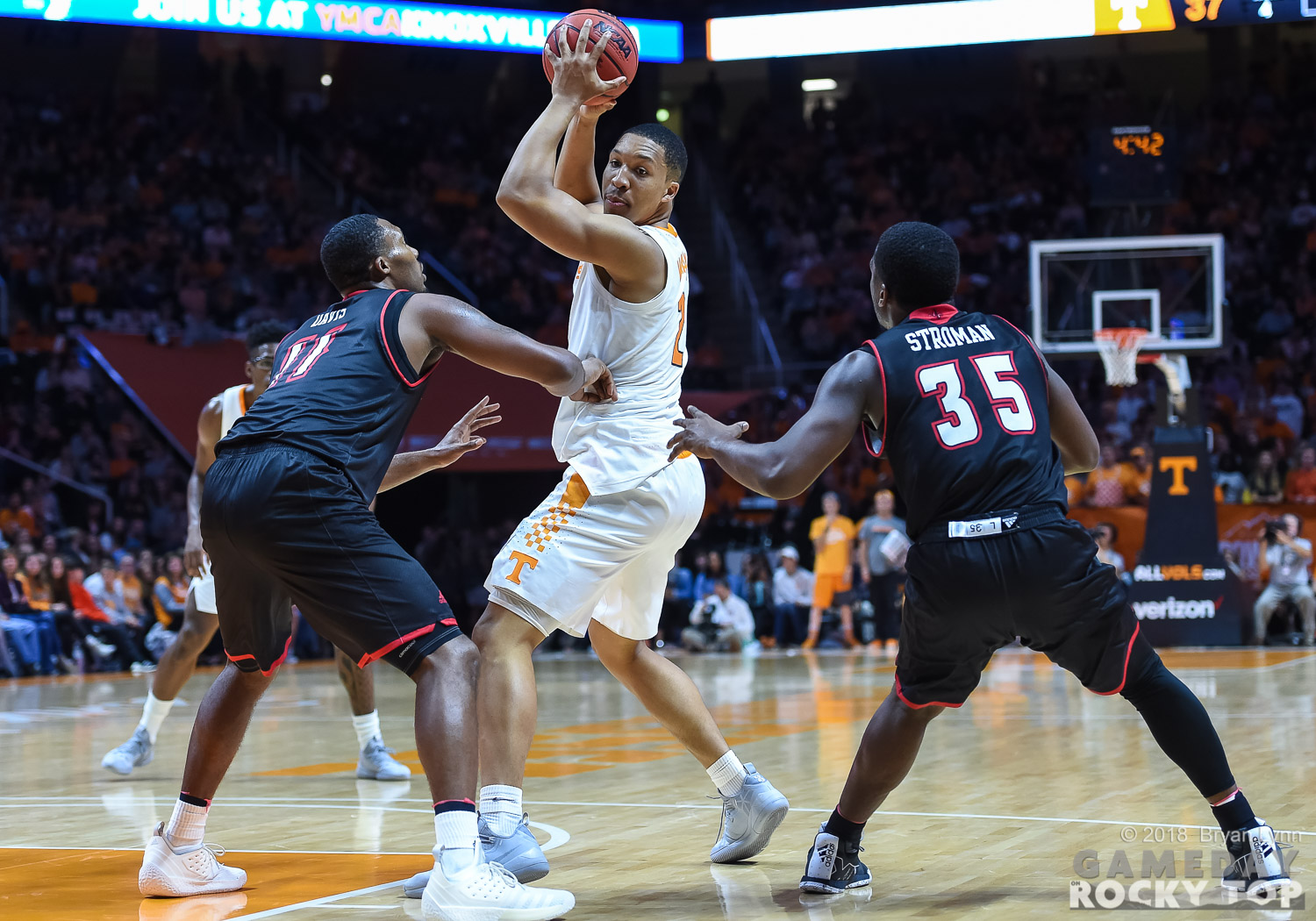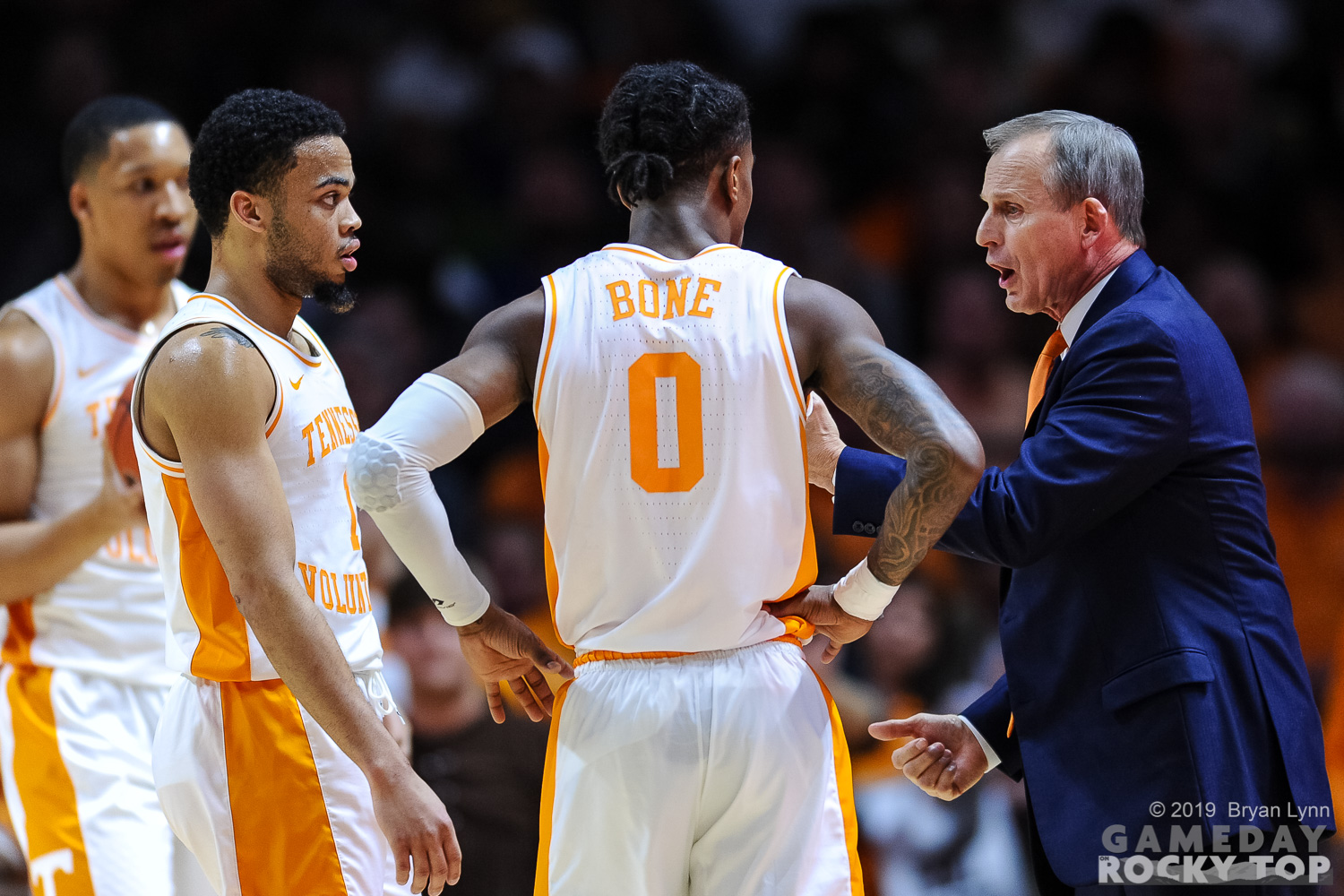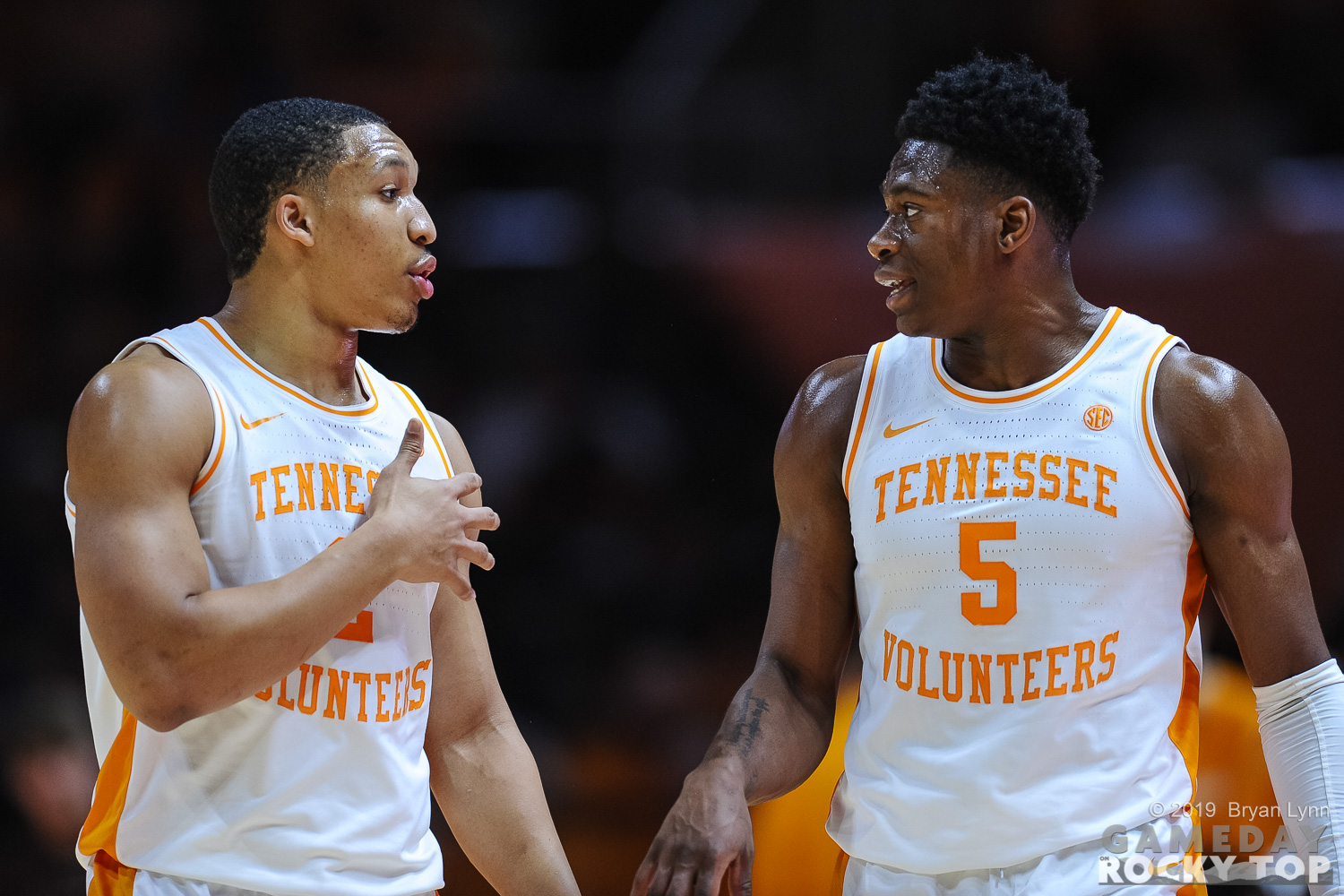Will’s already said all that really needs to be said about Tennessee’s 83-77 overtime win over the Iowa Hawkeyes to advance to the Sweet 16 in the 2019 NCAA Tournament. The only additional takeaways from a four factors perspective are that the second half was not like the rest of the game and that overall, the Vols did just well enough to win.
What they needed to do was play inside-out, shoot well, and defend well without fouling too much. What they did was toe the line on all of that without somehow falling into the abyss. They still put up 20 threes, but most were open because they came after paint touches, and they hit them at a 40% clip. They held the Hawkeyes to 39% from the field and 33.3% from the arc, but they put them on the line 32 times doing it. Turnovers weren’t supposed to be a factor, but once again, Tennessee got overly charitable in this department, particularly in the second half.
That’s how you find yourself in an overtime game in the NCAA Tournament. But the Vols survived. And now they advance.
So, here’s a look at the four factors numbers for Tennessee’s next game against the Purdue Boilermakers. As before, the conclusions are up front, and the details follow:
Summary and Score Prediction
The goals for the Vols:
- Rebound. Rebound. Rebound.
- As always, play inside-out and shoot well.
- Dial up the defensive aggression.
- No more naps.
Four Factors: Straight-Up
Effective FG%
- Tennessee 55.2 (No. 21)
- Purdue 53.0 (No. 78)
Prior opponents:
- Iowa 52.9 (No. 77)
- Colgate 55.9 (No. 14)
- Auburn 53.9 (No. 51)
- Mississippi State 54.6 (No. 36)
- Kentucky 53.6 (No. 59)
- Ole Miss 53.5 (No. 64)
- LSU: 52.7 (No. 93)
- Vanderbilt: 50.3 (No. 198)
- Kentucky: 52.8 (No. 93)
Conclusions: Basically, Iowa.
Turnover %
- Tennessee 16.1 (No. 27) (but trending in the wrong direction quickly)
- Purdue 16.1 (No. 28)
Prior opponents:
- Iowa 17.2 (No. 83)
- Colgate 19.3 (No. 232)
- Auburn 18.3 (No. 151)
- Mississippi State 19.1 (No. 220)
- Kentucky 18.7 (No. 185)
- Ole Miss 18.7 (No. 172)
- LSU 19.0 (No. 196)
- Vanderbilt: 19.9 (No. 255)
- Kentucky: 18.5 (No. 158)
Conclusions: Basically, us. Let’s hope they’re trending in the wrong direction, too.
Offensive Rebound %
- Tennessee 31.9 (No. 63)
- Purdue 34.9 (No. 18)
Prior opponents:
- Iowa 29.8 (No. 114)
- Colgate 30.3 (No. 103)
- Auburn 33.5 (No. 39)
- Mississippi State 34.6 (No. 23)
- Kentucky 37.9 (No. 4)
- Ole Miss 31.9 (No. 64)
- LSU 37.4 (No. 6)
- Vanderbilt: 28.6 (No. 178)
- Kentucky: 38.3 (No. 3)
Conclusions: Uh oh. Basically, these guys are like Kentucky and LSU. Let’s hope they don’t shoot a lot of free throws, too.
Free Throw Rate
- Tennessee 33.0 (No. 183)
- Purdue 29.5 (No. 275)
Prior opponents:
- Iowa 42.0 (No. 16)
- Colgate 28.9 (No. 285)
- Auburn 30.9 (No. 245)
- Mississippi State 33.0 (No. 188)
- Kentucky 42.2 (No. 14)
- Ole Miss 32.8 (No. 200)
- LSU 39.8 (No. 29)
- Vanderbilt: 44.8 (No. 7)
- Kentucky: 41 (No. 22)
Conclusions: Oh, good. Basically, these guys get to the line about the same as Colgate. Time to dial up that aggression on defense, guys.
Those are the straight-up comparisons of the teams’ respective averages in the four factors, but what about the fact that those numbers are impacted in any given game by the opponent?
Four Factors: Opponent impact
Effective FG%
When Tennessee has the ball
Tennessee’s EFG% is 55.2 (No. 21), while Purdue’s defense against that is 48.7 (No. 80). They defend much better than Iowa, so expect good shots to be more difficult to find. Remember, we’re not bowling; we’re playing basketball, and if we’re not shooting as well, Purdue might just be part of the reason.
When Purdue has the ball
The Boilermakers’ EFG% is 53.0 (No. 78), while Tennessee’s shooting defense is 47.6 (No. 36). The numbers are essentially the same in this category as they were for the Iowa game during which the Vols did pretty well limiting the Hawkeyes’ EFG%.
Conclusions
Expect Tennessee to have more difficulty getting good shots against Purdue than it did against Iowa. On the other end, the starting point is pretty much suggesting that this is the same game as the one the Vols just played. Overall, they did fine defending against Iowa, and if they can eliminate that second half lapse, they’ll be better than fine in this category against Purdue. They should also be able to turn up the defense a bit due to the Boilermakers’ usual free throw rate (see below)
Bottom line, expect a bigger challenge on the offensive end for the Vols, but hopefully it’s easier enough on the defensive end to still win the EFG% game.
Turnover %
When Tennessee has the ball
Tennessee’s turnover % is 16.1 (No. 27), while Purdue’s defensive counterpart to this category is 19.2 (No. 122).
When Purdue has the ball
Purdue’s turnover % is 16.1 (No. 28), while’s Tennessee’s ability to force turnovers is 18.2 (No. 183).
Conclusions
I’ve been wrong on turnovers ever since the Vols started playing tournament teams, so I fully expect Tennessee to give away a bucketful of turnovers despite what the numbers say. It will probably come during nap time, which starts at the second-half tip and continues through the under 12:00 timeout.
Offensive Rebounding %
When Tennessee has the ball
Tennessee’s OR% is 31.9 (No. 63), while Purdue’s defense in that category is 26.5 (No. 97).
When Purdue has the ball
The Boilermakers’ OR% is 34.9 (No. 18), while the Vols’ defense in that category is 30.2 (No. 262). This is Purdue’s biggest advantage of the game.
Conclusions
That’s a huge disparity between what Purdue does best and what the Vols’ do worst. It’s downright frightening
Still, all the good EFG% defense in the world won’t matter if you just keep giving them do-overs. I’d expect the team to put some additional emphasis on defensive rebounding. They may not win in this category (although they did last year),
Free Throw Rate
When Tennessee has the ball
Tennessee’s FT Rate is 33.0 (No. 183), while Purdue’s defense against that is 31.4 (No. 138).
When Purdue has the ball
The Boilermakers’ FT Rate is 29.5 (No. 275), while Tennessee’s defense against that is 34.4 (No. 224).
Conclusions
This to me says that it’s okay for the Vols to dial up the defensive pressure unless and until it starts triggering bad fouls.
Summary and Score Prediction
It should go without saying that anything can happen in a game like this, but it appears that the Vols should end the game with a better shooting percentage than the Boilermakers and Purdue should end up with more opportunities due primarily to their rebounding advantage. If Tennessee decides to get turnover-happy again, it could end a magical season.
The goals for the Vols:
- Rebound. Rebound. Rebound.
- As always, play inside-out and shoot well.
- Dial up the defensive aggression.
- No more naps.
This game is basically a coin flip. KenPom gives Tennessee a 49% chance of winning and puts the score at Purdue 75, Tennessee 74. The current line is Tennessee -1.
Go Vols.
